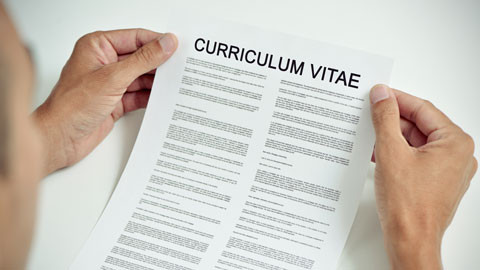
6 Steps to write a great art project´s statement
The project statement is, together with your portfolio, one of the most important tools to present and promote your art. As you can see on our website, project statements are always required to apply for competitions and residences, to inform curators, and for press releases. So it is good to have one ready to be sent out.
Your statement should describe and provide some insight into your project. The quality of the text will have a strong influence on the way your project will be perceived by the reader. This is why it is essential to take the time needed to make a good statement.
Of course describing your artistic practice in words can be a difficult task for an artist. Try to see it as a chance to clarify your ideas, and an opportunity to get new perspectives on your work. It is highly likely that your work will benefit from this experience. The first statement is always the most difficult one, afterwards you will only need to adapt it for the different purposes at hand and make updates.
Let´s see how to make a great statement in 6 steps:
1. Length
As a first step, you will have to decide about how long your statement is going to be. The length always depends on the purpose of the statement. It can vary from say 100 words to one page. This will determine how many details you are going provide about your project.
If a guideline is not given to you by the art opportunity, the best length is about half a page. Remember that most of the readers are going to skim over the text and not read it entirely. So, it is very important that you keep your statement short, structured and straight to the point.
2. Content
In a second step, take notes as you might do when you were explaining your work orally to a stranger. The explanation should be simple and honest.
Here are some basic questions which might be helpful to you:
- What does your project consist of?
- What are you trying to achieve through this project?
- How does it relate to your artistic practise?
- Did you already do a similar project?
- What materials is it made of?
- Why do you use these materials?
- Which ideas are you exploring through this project?
- Does your work relate to certain art theories or philosophies?
- Which artists or movements do influence your project?
- Do you expect a certain reaction from your audience?
Now that you have a lot of notes, try to extract the key elements and relate them to each other. This will build the core of your statement that you might want to improve by reviewing it several times.
Note that if you want to write a press release, you should also include personal information about your nationality, education, exhibitions, and the prizes you have won. This will inform the reader about the stage of your artistic career.
3. Structure
Structuring all this information will allow the reader to grasp the essentials quicker. As you want to positively influence the way readers perceive your work, make it easy for them to understand your statement. On this basis, you might want to structure your statement in three parts:
- An introduction which should announce what your project consist of;
- The main part where you give more details and elaborate the ideas behind your work;
- The final part which summarizes the key elements of your project in a few sentences.
4. Style
Always write the statement in present tense and in the first person, this will make your text more personal and more alive, and thus much more interesting to the reader.
Furthermore, your statement should explain your ideas very clearly without being too complex or technical. To achieve this, stay consistent in your ideas, get rid of everything that is not necessary, and go straight to the point.
Avoid general statements which do not provide much information and convey your confidence by using a clear vocabulary. Don´t hide a possible uncertainty behind words that only scholars can understand. Likewise, be honest to yourself and your art and don´t try to write things that, in fact, are not in your work just because they sound good.
While writing, always remember that you want to invite people to get acquainted with your art practice and not exclude them.
5. Correction
Ask two people – for instance, one who knows your project and one who does not - for their opinion about your statement. Both of them should understand your thoughts and get interesting insights into your work out of it. Be open to criticism.
Make sure not to have any spelling and grammatical mistakes in your statement. For this you can use one of the many corrections programs on-line.
6. Layout
Finally, pay attention to the presentation of your project statement, a good-looking layout is much more appealing to the reader and will make her/him more receptive to the content.
Choose a layout and fonts which will not distract the reader from your statement. Rather than fancy fonts, select classic ones like Helvetica or Arial in a size between 11 and 12 points. Check some layout and typography rules on-line.
- By Artenda
- Posted 05.09.2017
6 Essential tips to write an artist´s statement
The artist statement is along with your portfolio one of the most important tools to present and promote your art work. As you can see on our website, artist statements are always required to apply for...
read more
9 Secrets to make an excellent portfolio
Your portfolio is the most important tool to present and promote your art. It should give a clear and comprehensive overview of your work and provide additional information about your art practice. As you can see on this website...
read more
4 Steps to write the perfect artist´s CV
The curriculum vitae is a document which shows your story and your achievements as an artist. Together, your portfolio and your artist statement are one of the important means to present your art practise to others...
read more



